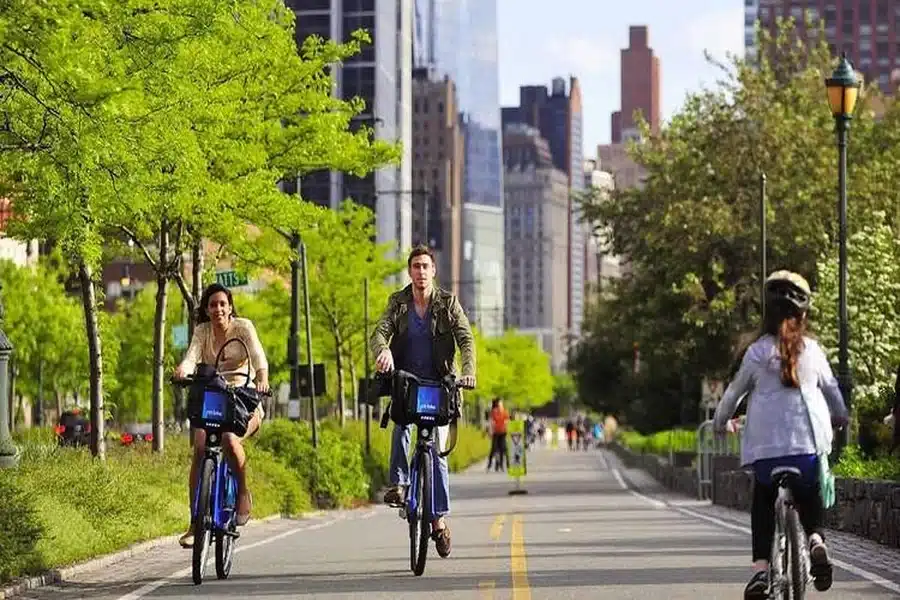The Impact of Urban Design on Pedestrian Safety

As a professional navigating the complexities of urban planning and public safety, you understand the critical role that thoughtful urban design plays in safeguarding pedestrians. The streets we traverse are more than mere pathways; they are dynamic environments where infrastructure choices can profoundly influence safety outcomes. Whether seeking a Boca Raton pedestrian accident attorney, this article delves into the intricate relationship between urban design and pedestrian safety, exploring how deliberate infrastructure changes can prevent accidents and protect lives.
Urban Design’s Impact On Pedestrian Safety
Urban design is a pivotal factor in shaping pedestrian safety. It encompasses the planning and arranging of city layouts to facilitate safe and efficient movement. Streets, sidewalks, and crosswalks are deliberately crafted to minimize risks.
Enhancing Infrastructure
Making improvements to road infrastructure can lower the risks of accidents for pedestrians. Lengthening the width of curbs and adding speed bumps are among the best ways to improve street safety. They result in drivers reducing their speed and paying more attention on the roads.
Promoting Walkability
If cities make it easy for residents to walk, both safety and health will improve. By making walking routes linked, new street lamps and safe crossings, cities support easier movement on foot. With proper planning, residents feel more connected to their community and stay safe.
Evaluating Infrastructure Changes: What Works and What Doesn’t
Effective Measures
Implementing wider sidewalks and pedestrian-only zones has shown positive outcomes in urban areas. These changes create safer spaces for pedestrians by reducing vehicular interference. Furthermore, enhancing crosswalk visibility through better signage and lighting significantly decreases accident rates, ensuring drivers more easily notice pedestrians.
Ineffective Approaches
Conversely, merely installing additional traffic signals without synchronizing them can lead to confusion and increased congestion. Similarly, speed bumps placed without strategic consideration may disrupt traffic flow without substantially enhancing pedestrian safety.
Comprehensive Solutions
A holistic approach combining community engagement and innovative design has proven successful. Engaging local communities in planning ensures that solutions are tailored to the unique needs of each urban area, while integrating technology, such as smart traffic management systems, optimizes pedestrian safety and traffic flow.
Innovative Urban Design Strategies to Prevent Accidents
Urban design plays a pivotal role in enhancing pedestrian safety and preventing accidents. By implementing innovative strategies, cities can create safer environments for their residents.
Traffic Calming Measures
One practical approach is to integrate traffic-calming measures. These include narrowing roads, adding speed bumps, and introducing roundabouts to reduce vehicle speeds. Such modifications encourage drivers to proceed cautiously, thereby reducing the risk of collisions.
Enhanced Crosswalks
Another vital strategy involves enhancing crosswalks with high-visibility markings and pedestrian signals. Ensuring these crossings are well-lit and marked makes pedestrians more visible to drivers, which helps prevent accidents.
Pedestrian-Only Zones
Creating pedestrian-only zones in busy urban areas can further safeguard walkers. These zones prioritize pedestrian movement by restricting vehicle access during peak times, fostering a safer and more enjoyable urban experience.
Future Trends: How Urban Design is Shaping Safer Cities
Smart Infrastructure
As urban areas evolve, integrating smart infrastructure is crucial in enhancing pedestrian safety. Emerging technologies such as sensor-equipped streetlights and intelligent crosswalks can dynamically respond to pedestrian movement, ensuring safer navigation. These adaptive systems often incorporate real-time data to adjust traffic signals, thereby minimizing the potential for accidents.
Green Spaces and Walkability
Increasing emphasis on green spaces and walkable environments also contributes to safer cities. Urban planners are redesigning streetscapes to prioritize pedestrians over vehicles. Features such as wide sidewalks, pedestrian-only zones, and improved street furniture encourage walking while reducing vehicular interaction. This shift not only enhances safety but also promotes community interaction and well-being.
Community Collaboration
The role of community collaboration in urban design is pivotal. Engaging local stakeholders in planning processes ensures that infrastructure changes align with residents’ needs and behaviors. Such participatory approaches lead to more effective, sustainable safety improvements, ultimately fostering a sense of ownership and responsibility within communities.
Final Thoughts
Evaluating the intricate relationship between urban design and pedestrian safety has provided you with valuable insights into how infrastructure changes can significantly reduce accidents. As stakeholders in urban planning, it is incumbent upon you to champion designs that prioritize human lives over vehicular supremacy. Whether seeking a Boca Raton pedestrian accident attorney, advocating for well-lit crosswalks, traffic-calmed streets, and accessible sidewalks, you contribute to creating safer pedestrian environments.
